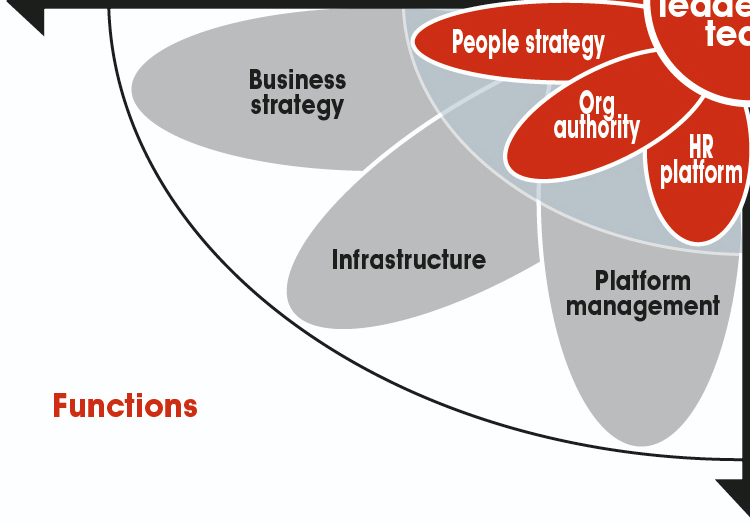I’ve recently written about the opportunity for new people-centric organisation forms in this article in last month’s HR Magazine, and this article on LinkedIn. Both are based on some of my book, The Social Organization.
I’ve now also applied this thinking to the HR organisation, building upon an article I co-authored with Dave Ulrich in 2016 to develop a new archetypal HR model which extends well beyond the traditional Ulrich model / three legged stool. This model is profiled in this month’s HR Magazine and this article here.
My next couple of posts are to add a little more detail to the model and the description in the HR Magazine article. First up, functions (and see this article about the role of functions within the rest of the business too).

Even as HR and the rest of the business increasingly use other types of organisation, it will still be relevant to use functions for some aspects of HR.
Centre for People and Organisation Strategy
Given the growing importance of people, and therefore people strategy, it makes sense to keep a functional centre focused on this. It will be a similar group to the centre for organisation effectiveness recommended by Ed Lawler at the University of South California. He suggests that embedded HR professionals do not operate at a sufficiently high strategic level and that therefore this new group is needed too.
The centre could be combined into the central HR leadership team but it may make sense to create a separate specialist group in which case it could be integrated into a larger centre focused on the broader business strategy.
Centre of Organisation Authority
It is also likely that responsibility for maintaining the organisation model (structure, technology, organisation / HR data, etc) be formalised within another functional group. This is because leaving this to a community would provide less control of this important asset than can be provided through a function.
The centre could be combined with the people strategy one but much of its focus will be quite operational in nature. Instead of that, this centre could be made part of a broader business function overseeing all aspects of the organisation’s assets or infrastructure, including its buildings, technology, knowledge, data and finances as well as providing the organisation design authority.
HR Platform Management Group
Given continuing developments of technology, existing service centres are likely to largely disappear with much of this work being taken on by automation, AI, chatbots, apps, and by employees and managers themselves, often with the help of support communities or networks. There may still be a need for service advisors and perhaps local employee relations advisors too.
However, it is no longer necessary to bring all these activities together into a centre in order to standardise them. It is therefore more likely that activities will be co-ordinated and enabled using digital platforms, supported by greater use of analytics and a focus on employee experience.
A new HR platform group will therefore focus on the management of these platforms, often providing tailored approaches to different parts of a business through the use of varied service levels and linked internal charge rates. Increasingly, the centre will also be integrated with other central services (Finance, Procurement, IT, etc) across the business.
Article by channel:
Everything you need to know about Digital Transformation
The best articles, news and events direct to your inbox









